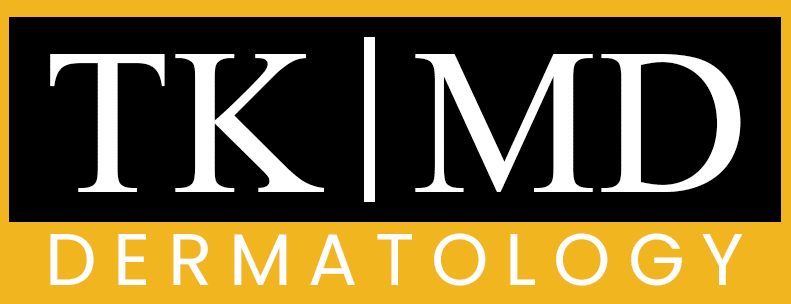As we delve into the realm of varicose eczema, we find ourselves confronted with a condition that intertwines the complexities of skin health and vascular issues. Varicose eczema, also known as stasis dermatitis, is a skin condition that arises due to poor circulation, particularly in the lower extremities. This condition is often associated with varicose veins, which are swollen and twisted veins that can lead to a host of complications, including skin changes.
The skin becomes inflamed, itchy, and discolored, often leading to discomfort and distress for those affected. In our exploration of varicose eczema, we recognize that it is not merely a cosmetic concern but a significant health issue that can impact our quality of life. The underlying cause of this condition is typically related to venous insufficiency, where the veins struggle to return blood to the heart effectively.
This stagnation of blood flow can lead to increased pressure in the veins, resulting in fluid leakage into surrounding tissues. As we understand this condition better, we can appreciate the importance of addressing both the skin symptoms and the underlying vascular problems.
Key Takeaways
- Varicose eczema is a skin condition that occurs in the lower legs due to poor circulation and varicose veins.
- Symptoms of varicose eczema include itching, redness, dry and flaky skin, and swelling, and it is caused by increased pressure in the veins of the legs.
- Diagnosis of varicose eczema involves a physical examination, medical history, and possibly imaging tests such as ultrasound.
- Treatment options for varicose eczema include lifestyle changes, topical treatments, compression therapy, medications, and surgical procedures.
- Lifestyle changes for managing varicose eczema include elevating the legs, regular exercise, wearing compression stockings, and maintaining a healthy weight.
Symptoms and Causes of Varicose Eczema
When we consider the symptoms of varicose eczema, we find that they can vary widely among individuals. Commonly, we may experience redness, swelling, and scaling of the skin, particularly around the ankles and lower legs. The affected areas may become itchy and painful, leading to scratching that can exacerbate the condition.
In some cases, we might notice a brownish discoloration of the skin due to hemosiderin deposition, a result of blood leakage from the veins. If left untreated, varicose eczema can lead to more severe complications, including skin infections and ulcerations.
The causes of varicose eczema are closely linked to venous insufficiency.
As we age, our veins may weaken and lose elasticity, making it difficult for them to effectively transport blood back to the heart. Factors such as obesity, prolonged standing or sitting, and a family history of venous disease can increase our risk of developing this condition. Additionally, pregnancy can contribute to varicose veins and subsequent eczema due to hormonal changes and increased pressure on the veins.
By understanding these causes, we can take proactive steps to mitigate our risk and manage symptoms effectively.
Diagnosis of Varicose Eczema

Diagnosing varicose eczema requires a comprehensive approach that often begins with a thorough medical history and physical examination. When we visit a healthcare provider with concerns about our skin, they will likely inquire about our symptoms, medical history, and any family history of vascular issues. During the physical examination, they will assess the affected areas for signs of inflammation, discoloration, and other characteristic features of varicose eczema.
In some cases, additional diagnostic tests may be necessary to confirm the diagnosis and rule out other conditions. These tests may include Doppler ultrasound studies to evaluate blood flow in the veins or skin biopsies to examine the tissue more closely. By gathering this information, our healthcare provider can develop a tailored treatment plan that addresses both our skin symptoms and any underlying venous insufficiency.
Treatment Options for Varicose Eczema
When it comes to treating varicose eczema, we have a variety of options at our disposal. The primary goal of treatment is to alleviate symptoms while addressing the underlying venous insufficiency. One of the first steps we might take is implementing lifestyle changes that promote better circulation and reduce swelling in our legs.
This could include elevating our legs when resting, engaging in regular physical activity, and maintaining a healthy weight. In addition to lifestyle modifications, we may also explore topical treatments designed to soothe our skin and reduce inflammation. These treatments can range from emollients that hydrate the skin to corticosteroids that help manage inflammation.
By combining these approaches, we can create a comprehensive treatment plan that not only addresses our immediate symptoms but also promotes long-term skin health.
Lifestyle Changes for Managing Varicose Eczema
As we navigate the challenges of managing varicose eczema, we find that lifestyle changes play a crucial role in our overall well-being. One of the most effective strategies is incorporating regular exercise into our daily routine. Engaging in activities such as walking or swimming can help improve circulation in our legs and reduce swelling.
Additionally, maintaining a healthy weight is essential; excess weight can place added pressure on our veins, exacerbating symptoms. Another important aspect of managing varicose eczema involves elevating our legs whenever possible. By propping our legs up on pillows or using a recliner, we can encourage better blood flow and reduce swelling.
Furthermore, wearing loose-fitting clothing can help minimize irritation on our skin while allowing for better airflow. By making these lifestyle adjustments, we empower ourselves to take control of our condition and improve our quality of life.
Topical Treatments for Varicose Eczema

Emollients: The First Line of Defense
Emollients are often recommended as a first-line treatment; these moisturizing agents help hydrate the skin and create a protective barrier against irritants. Regular application of emollients can significantly reduce dryness and itching associated with this condition.
Corticosteroids: Managing Inflammation and Redness
In addition to emollients, corticosteroid creams or ointments may be prescribed to help manage inflammation and redness.
These medications work by suppressing the immune response in the affected area, providing much-needed relief from discomfort.
Safe Use of Corticosteroids
However, it’s essential to use these treatments under the guidance of a healthcare provider to avoid potential side effects associated with long-term use.
Compression Therapy for Varicose Eczema
Compression therapy is another vital component in managing varicose eczema effectively. This treatment involves wearing specially designed compression garments that apply pressure to the legs, helping to improve blood flow and reduce swelling. When we wear compression stockings or bandages consistently, we may notice a significant reduction in symptoms such as heaviness and discomfort in our legs.
The benefits of compression therapy extend beyond symptom relief; it also plays a crucial role in preventing further complications associated with varicose eczema. By promoting better circulation, compression garments can help reduce the risk of developing venous ulcers or infections in the affected areas. As we incorporate compression therapy into our management plan, we empower ourselves to take proactive steps toward healthier skin and improved vascular function.
Medications for Varicose Eczema
In some cases, our healthcare provider may recommend medications beyond topical treatments to manage varicose eczema effectively. Oral antihistamines can be beneficial for alleviating itching and discomfort associated with this condition. By blocking histamine receptors in our body, these medications can provide us with relief from persistent itching that often accompanies eczema flare-ups.
Additionally, if we experience significant inflammation or secondary infections due to scratching or skin breakdown, our provider may prescribe oral corticosteroids or antibiotics as needed. These medications can help control inflammation and address any bacterial infections that may arise from compromised skin integrity. By working closely with our healthcare team, we can ensure that we are utilizing the most appropriate medications for our specific needs.
Surgical and Minimally Invasive Procedures for Varicose Eczema
For individuals with severe varicose eczema or those who do not respond adequately to conservative treatments, surgical or minimally invasive procedures may be considered as viable options. These interventions aim to address the underlying venous insufficiency contributing to our skin condition. Common procedures include endovenous laser therapy (EVLT) or sclerotherapy, which target problematic veins by closing them off and redirecting blood flow.
While these procedures can provide significant relief from symptoms and improve overall leg health, it’s essential for us to discuss potential risks and benefits with our healthcare provider thoroughly. Each individual’s situation is unique; therefore, personalized recommendations based on our specific circumstances will guide us toward the most appropriate treatment options.
Managing Complications of Varicose Eczema
As we navigate the complexities of varicose eczema, it’s crucial for us to remain vigilant about potential complications that may arise from this condition. One common complication is the development of venous ulcers—open sores that occur due to prolonged pressure on the skin from poor circulation. If we notice any signs of ulceration or worsening symptoms despite treatment efforts, it’s essential for us to seek medical attention promptly.
Additionally, secondary infections can occur when the skin barrier is compromised due to scratching or inflammation. We must prioritize proper skincare routines and hygiene practices to minimize this risk. By staying informed about potential complications and maintaining open communication with our healthcare team, we can take proactive steps toward managing our condition effectively.
Prevention and Long-Term Management of Varicose Eczema
Preventing varicose eczema requires a multifaceted approach focused on maintaining healthy veins and skin over time. We should prioritize regular physical activity as part of our daily routine; this not only promotes circulation but also helps us maintain a healthy weight—an essential factor in reducing strain on our veins. Additionally, avoiding prolonged periods of standing or sitting without movement can significantly decrease our risk of developing venous issues.
Long-term management involves ongoing education about our condition and adherence to recommended treatment plans. Regular follow-ups with healthcare providers allow us to monitor any changes in symptoms or progression of venous disease effectively. By staying proactive about our health and implementing preventive measures consistently, we empower ourselves to live well with varicose eczema while minimizing its impact on our lives.
In conclusion, understanding varicose eczema is crucial for managing its symptoms effectively while addressing underlying causes related to venous insufficiency. Through lifestyle changes, topical treatments, compression therapy, medications, surgical options when necessary—and vigilant monitoring—we can take control over this condition together as a community committed to improving quality of life for those affected by varicose eczema.
If you are interested in learning more about effective treatments for skin conditions, you may want to check out this article on the best treatment for hyperpigmentation. Hyperpigmentation is a common skin concern that can be effectively treated with the right approach, just like varicose eczema. By consulting with a dermatologist, you can explore various treatment options to improve the appearance and health of your skin.
FAQs
What is varicose eczema?
Varicose eczema, also known as stasis dermatitis, is a skin condition that occurs in the lower legs of individuals with poor circulation. It is often associated with varicose veins and is characterized by red, itchy, and inflamed skin.
What are the symptoms of varicose eczema?
Symptoms of varicose eczema include red or purple patches of skin, dry and flaky skin, itching, swelling, and skin ulcers. The affected skin may also feel warm to the touch.
What causes varicose eczema?
Varicose eczema is caused by poor circulation in the legs, often due to underlying vein problems such as varicose veins or deep vein thrombosis. The lack of proper blood flow can lead to fluid buildup and inflammation in the skin.
How is varicose eczema treated?
Treatment for varicose eczema focuses on improving circulation and managing the symptoms. This may include wearing compression stockings, elevating the legs, using emollient creams to moisturize the skin, and addressing any underlying vein issues through procedures like sclerotherapy or vein surgery. In some cases, topical corticosteroids or other medications may be prescribed to reduce inflammation and itching.


